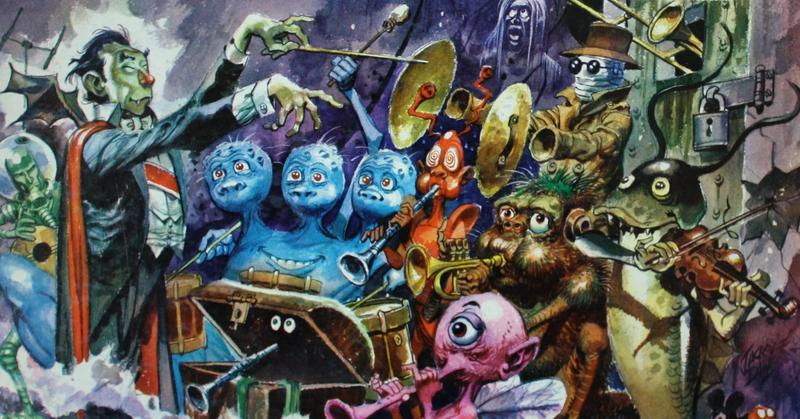Scary, Spooky Songs Of The Sixties And Seventies
By | October 15, 2018

The 1960s and 1970s were the best eras for spooky, scary novelty songs, and with Halloween just around the corner, now is a great time to remember the creepy tunes that made our spines tingle. Enjoy…if you dare…this collection of frightening, yet catchy and danceable, hits that are sure to get you in the Halloween spirit.
'Monster Mash'

Perhaps the best known of the spooky songs of the sixties, the 1962 novelty tune "Monster Mash" by Boris Pickett and the Crypt-Kickers was a number one hit and remains a Halloween favorite. The song began as a joke. Pickett was known for his comical voice impressions and he particularly liked to imitate Boris Karloff, the horror movie actor with the thick Eastern European accent. One night, Pickett was performing with his band, the Cordials, when he began to cover “Little Darlin’” by the Diamonds in his best Boris Karloff voice. The audience loved it. He was then encouraged to write and record a novelty song sung in his spooky voice. "Monster Mash" is sung from the point of view of a mad scientist who creates a monster who likes to dance a new dance called the "Monster Mash." He then hosts a party for an assortment of other monsters who help make the dance a nationwide sensation.
'Spooky'

Mike Shapiro and Harry Middlebrooks, Jr. recorded an instrumental tune called "Spooky" in 1967 and it received moderate success. But when Classics IV re-released it the following year with their lyrics, sung by Denis Yost, the song became a number 3 hit on the Billboard Charts. Although the song actually documents the narrator’s love story with an aloof, odd, goth-hippie girl, it does include lyrics such as “Just like a ghost, you’ve been a-hauntin’ my dreams, so I’ll propose on Halloween”, which is just enough for the song to remain an October favorite.
'They’re Coming to Take Me Away Ha-Haaa!'

Reaching the number 3 spot on the music charts in 1966 was the creepy tune about insanity, "They’re Coming to Take Me Away Ha-Haaa!". Performed by Jerry Samuels under the stage name Napoleon XIV, the song narrators the mental breakdown and resulting paranoia after the song’s narrator is dumped by his wife or girlfriend. Samuels, a recording engineer, toyed with different techniques to alter the sound of the music. He settled on a method of speeding up and slowing down the music track while keeping the voice track consistent, an effect that gives the song an eerie sound.
'Clap For The Wolfman'

The Guess Who included Wolfman Jack, the gravelly-voiced, popular radio personality and DJ, on their 1974 novelty tune, "Clap For the Wolfman." Penned by Burton Cummings, Bill Wallace and Kurt Winter, the tune is less scary than it is pandering. The lyrics invite the listeners to honor the wolfman, not as a way to appease a mythical beast, but as a way to get the DJ to play your songs on the radio.
Dark Lady

Cher’s contribution to our list of spooky songs is "Dark Lady," a song about a creepy gypsy fortune-teller and a crime of passion. Written by John Robert Durrill, "Dark Lady" was recorded and released by Cher in 1974. The spooky and haunting song tells the story of a woman who visits a mysterious gypsy fortune teller in New Orleans who informs her that her lover is cheating on her with “someone very close to you”. It is later that night that the song’s narrator realizes that it is the mysterious gypsy herself that has stolen her man. In a fit of rage, the narrator shoots both the fortune teller and the cheating lover. The tune was Cher’s third number one song as a solo artist.
'Witchy Woman'

The Eagles reached the number 9 spot on the Billboard Charts with "Witchy Woman" in 1972, a single about an evil seductress who was dabbling in the occult. The song was written by Don Henley and Bernie Leadon and, according to legend, Henley was inspired to write the tune after reading the biography of Zelda Fitzgerald, a hard-drinking, wild and schizophrenic flapper wife of F. Scott Fitzgerald who may have “drove herself to madness with a silver spoon”.
